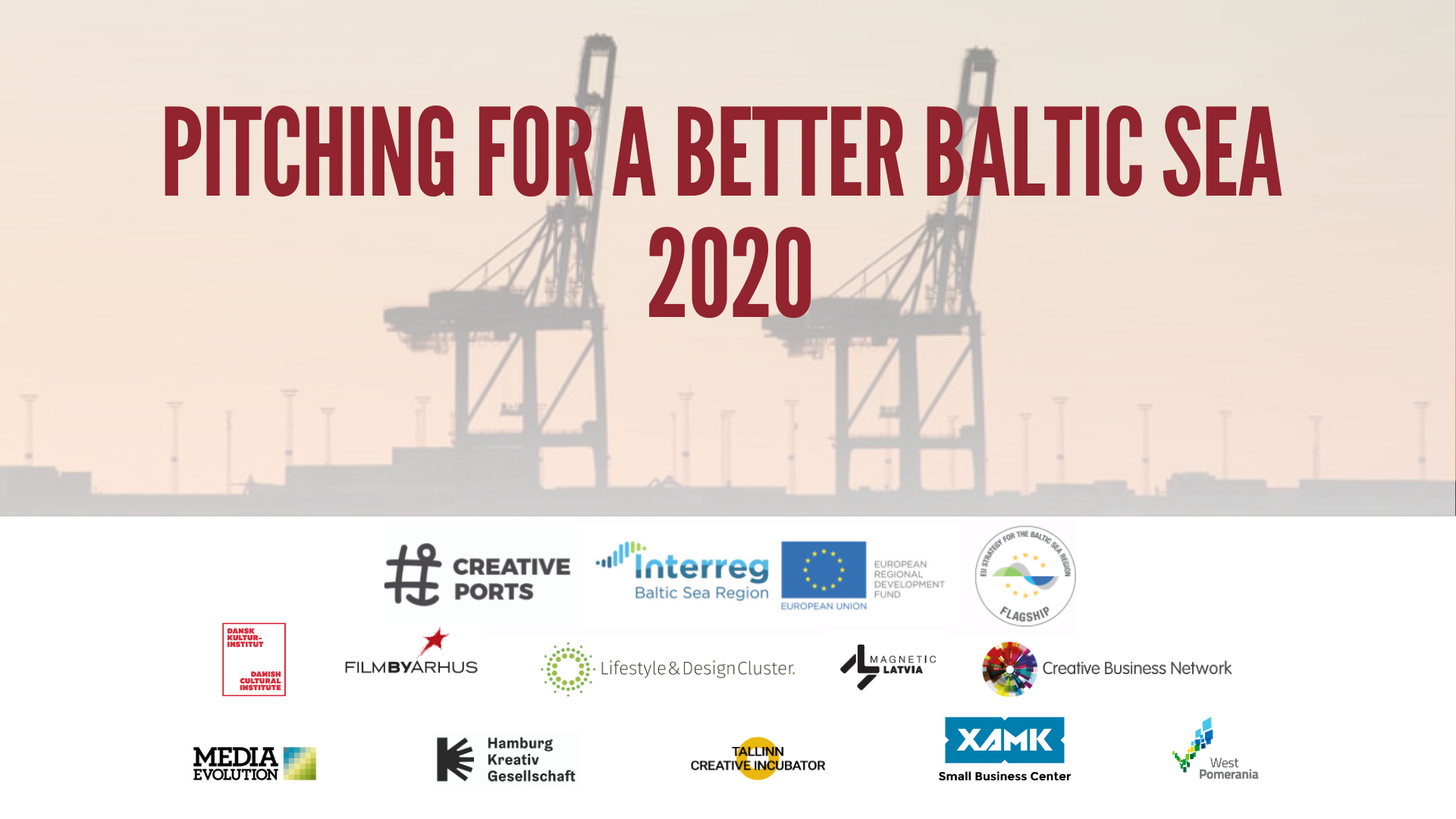The Danish Cultural Institute in Estonia, Latvia and Lithuania hosted the Internationalisation Tool "Pitching for a Better Baltic Sea" on 28-29 October 2020.
What were the aims of the tool?
Pitching for a Better Baltic Sea is about furthering transnational cross-sectoral collaborations in the Baltic Sea region within the creative industries. Gathering start-ups, SMEs, incubators and CCI organisations from the Baltic Sea region, Pitching for a Better Baltic Sea shows how UN's Sustainable Development Goals for climate change and sustainability can create value, give direction and lead toward the innovation and investments of the future.
The Pitching for a Better Baltic Sea internationalisation tool is split into two concrete sets of pilot activities, the first took place 28 and 29 October 2019, the second 28 and 29 October 2020. The 2019 activities involved two BSR countries, Denmark and Latvia, whereas the 2020 activities had partners and participants from 4 different BSR countries.
The general aims of the tool were to improve internationalisation of SME end-users in the design, fashion and digital fields within the cultural and creative industries in the Baltic Sea region as well as to address transnational challenges of sustainability and climate in the Baltic Sea region (taking the United Nations’ Sustainable Development Goals 12 and 13 as the starting point). To do this, the goal was to design a new integrated transnational experience (pitching contest, training event, B2B program) building on existing CCI-support frameworks (involving CCI support organisations and cultural institutes).
What were the highlights of the tool?
The 2020 tool activities had a good flow and high energy throughout the programme as well as high-quality pitches.
What were the experiences during the digitalising process of the tool?
Many aspects of the tool went very well, e.g. the event had mostly very high-quality pitches, a good flow and high energy throughout the activities, and the jury participation and feedback were also of a very high quality. The physical venue with a view over Aarhus harbour and a good setup for the moderator and as many speakers as possible was kept when the tool was adapted to a digital format, and that proved very valuable.
There were, though, some minor technical difficulties connected to the flow of the programme, a missing ‘culmination mood’ when the competition winner was announced as well as a lack of time both in terms of the jury feedback and judging process. It was also difficult to maintain the audience members throughout the entire event programme.
We as the organisation team learned that it is important to remember to use a well-tested and trusted technical company, to have a good physical set-up and to not improvise technical aspects on the day. Moreover, the choice of moderator is even more important than at a physical event – and the job is even harder without a physical audience. It is also much harder for the moderator to engage directly with the jury members during the competition (remembering who should speak, see who wants to speak, etc.). Furthermore, the preparation of the jury is even more important than at a physical event, and it is important to remember to provide them with a thorough jury guide, do a technical testing before programme start, host a preparatory jury meeting and to choose a jury ‘leader’ before the event.
The programme for an online pitching event also has to be built differently than for a physical event: the programme should have smaller activity slots and have more of a narrative arc like in a movie or novel (especially for activities spread out over several days). An online event also requires more communication and PR work as well as more follow-up activity to ensure the best facilitation of new contacts and networks between the participants (e.g. by sending contact sheets for the participants after the event).
We would give the advice to distribute in advance an in-depth guide with clear judging criteria and programme as well as send a guide for the technical participation and host a live technical testing before the event (i.e. reduce ‘uncertainty’ for all involved). Remember to not only adapt a physical event to a digital format, but to actively use the new and interesting possibilities a virtual format can bring to an event.
In other words: don’t adapt, improve!
Photo: Moderator Heidi Svane (Head of Digital & Director of Copenhagen Office at Lifestyle & Design Cluster)





